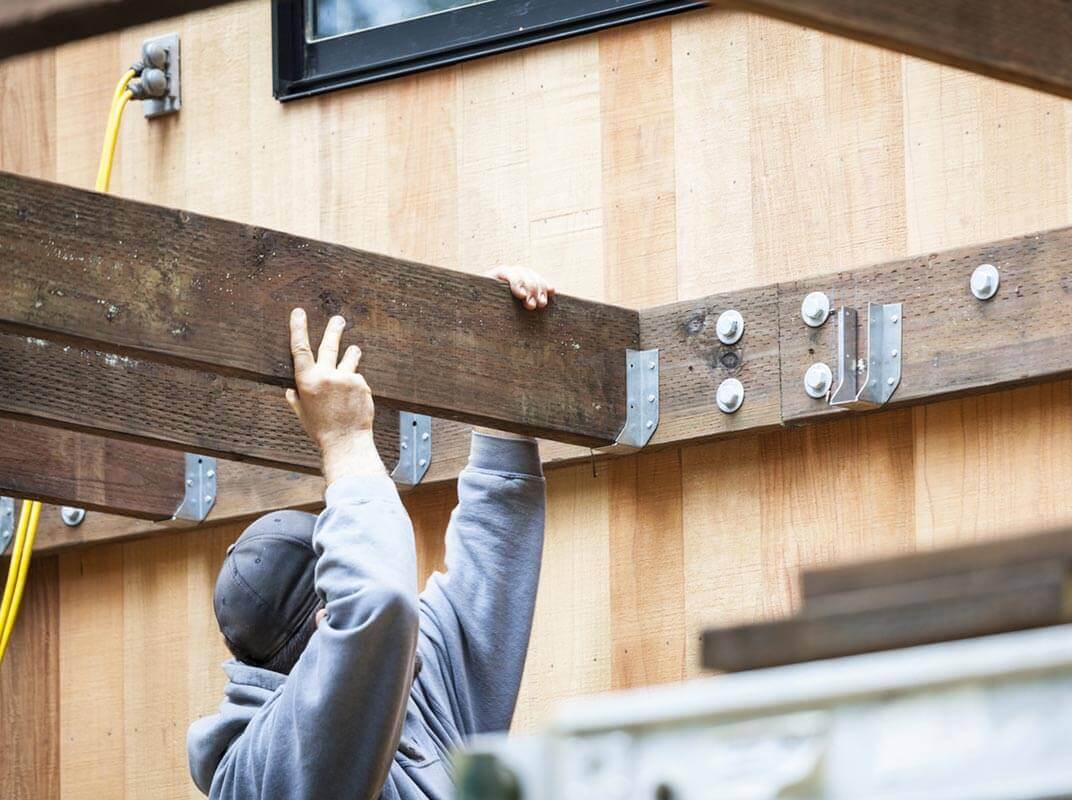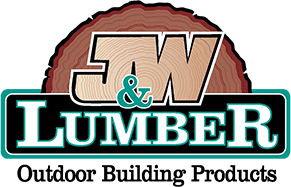
Your home’s exterior deck is forced to withstand the elements day-in-day-out, all year long. It’s tasked with handling extreme temperature fluctuations, fending off assaults by insects and fungus, and—depending on where you live—resisting corrosive elements like salt air. And none of this includes all the standard wear accumulated from actually using the deck itself. In short, your deck is faced with a tall order: stay strong, sturdy, and stable under challenging circumstances.
Even if you choose the most durable lumber on the market, your deck is only as safe as its weakest connection. Deck connectors are small but mighty pieces of metal. Their purpose is to safely direct the load through the wood and the posts transferring it into the ground. The only thing standing between a secure deck and structural collapse? The right decking hardware.
Luckily, deck connectors and other accompanying hardware have come a long way. Careful design and meticulous engineering have resulted in specialized hardware that plays an important role in keeping your deck upright.
Here’s a basic overview of the types of decking hardware available today and how it works hard to reinforce your deck.
Simpson Strong Tie: Always Up to Code
In the world of decking hardware, one company stands out among the rest. Simpson Strong Tie is an industry leader for most outdoor building materials, but for decking hardware, it’s the industry standard. Their hardware is carefully designed and engineered to meet all California building codes. This standardization takes the guesswork out of selecting deck connectors that won’t get kicked back by the building inspector.
Get to Know Your Hardware
The secret to a sturdy deck is using the appropriate hardware for the connection point. Luckily, today’s hardware is specially designed to handle every deck joint connection imaginable. Here are some of the most common deck connectors:
- Stair stringer to deck framing connectors
- Joist to beam connectors
- Beam to post connectors
- Post to footing connectors
- Stair tread to stringer connectors
- Joist to ledger connections
- Knee brace connectors
These seven will be used in nearly every elevated deck construction with stairs. Because these hardware items are meant to facilitate a specific means of connection, simply familiarizing yourself with their design helps you visualize how each of these decking elements will fit together. Simpson Strong Tie has also released a helpful introductory manual that introduces you to the above deck hardware and more.
Find out when hiring a decking contractor is your best bet.
Visualize the Finished Product
It’s difficult to determine the best hardware for each connection point without picturing the overall design of your deck. Keeping the overall design in mind helps you get a better sense of which deck fastener you’ll need. Avoid the guesswork by creating a complete design before you cut your first piece of lumber. Simpson Strong Tie has incorporated free, easy-to-use deck design software directly into their website. Not only does the software help you generate a schematic for your deck construction project, it also supplies a list of the appropriate type and number of specific deck connectors you’ll need.
Ask Questions
One of the most challenging aspects of DIY construction is that you don’t know what you don’t know. Don’t worry—there’s no need to go at it alone. Don’t be afraid to consult the team at your local lumber store for guidance. Big box store employees may have basic knowledge of deck construction hardware, but lumber store staff usually have a more detailed understanding of what you’ll need. They can help you generate a materials list and can answer specific questions about your project.
Don’t Skimp on the Screws
With all the effort you’re putting into making smart design and construction choices for your deck, be sure not to blow it by using inappropriate screws. Remember: your deck is only as strong as your connection points, so even if you use the best deck connector hardware on the market, you can still compromise the integrity of your structure by grabbing any old wood screw, thinking it will do the trick. Always use screws that are made of galvanized steel and are rated for outdoor use. Simpson Strong Tie’s Strong Drive (SD) line is engineered specifically to withstand the elements without corroding over time.
Check out the most common decking mistakes homeowners make.
Hardware is the unsung hero of your outdoor deck. The lumber attracts the attention, but it’s the hardware that turns a stack of planks and posts into a statement piece that can support its own bulk without collapsing. Do your research, ask questions, and learn about the correct deck fastener for each connection point. Using the right fasteners allows you to build peace of mind directly into your deck.
